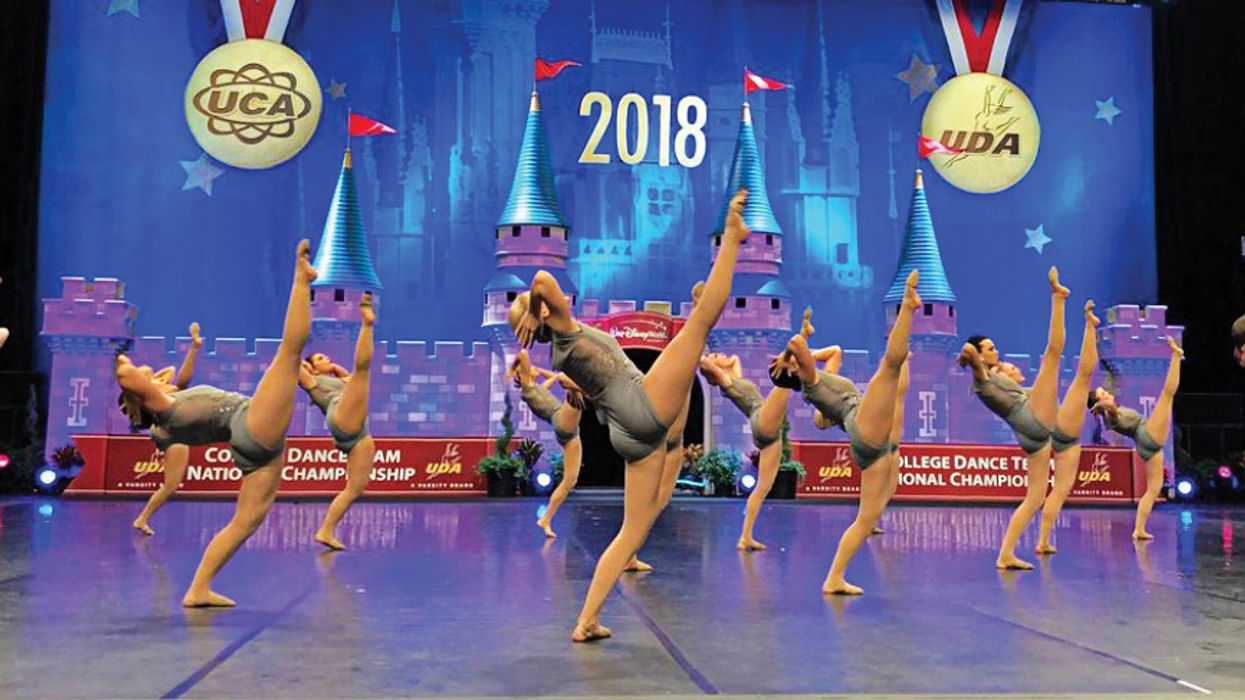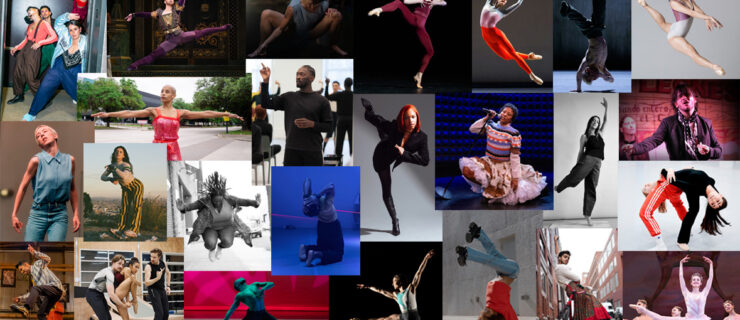Dance Team Score Sheets Decoded: A Breakdown for Your Best Nationals Score Yet
We’ve broken down the UDA and NDA rubrics to enhance your practice sessions and get you ready for Nationals.
Universal Dance Association (UDA)

College categories:
Pom, hip hop, jazz
High school categories:
Pom, hip hop, jazz, kick
*Note that the UDA score sheet is the same for all categories, for a total of 100 points.
10 Points—Execution of Movement
How well are you moving? Are you controlled? Be sure to maintain proper posture and alignment, while staying grounded.
10 Points—Execution of Skills
How well do you execute turns, leaps, acro tricks, jumps, kicks, and lifts? For pom, judges are looking for a “hard stick” of each picture, while jazz emphasizes proper posture, body alignment, and turnout.
10 Points—Synchronization/Uniformity
How well is the team moving as a whole? Are they in unison? How precise is the timing of the team?
10 Points—Spacing
Make sure to keep spacing consistent and even, especially through transitions.
10 Points—Communication/Projection
Commit to the emotion of your routine. Be careful of trying to fake this section, as the judges will be able to tell. Ask the choreographer about the emotions and story that you should be sharing. Be sure they feel true to you—this will leave the judges with not just an image, but also a lasting emotion.
10 Points—Creativity/Musicality
Is the routine new and innovative? Does the choreography both complement and enhance the music?
10 Points—Routine Staging
A variety of formations is ideal, and try to use the whole performance floor. Transitions should be choreographed and seamless.
10 Points—Complexity of Movement
The choreography should demonstrate a variety of intricate movements with weight and tempo changes.
10 Points—Difficulty of Skills
This focuses on the difficulty of the skills, not execution. But difficult lifts or turns you can’t do well will lose your team points in other sections.
10 Points—Overall Impression
Do the music, costuming, and choreography all come together in an appropriate and effective way? Does the routine leave a lasting impression?
National Dance Alliance (NDA)

College categories:
Team performance, pom, hip hop, jazz
High school categories:
Team performance, pom, hip hop, jazz, kick
10 Points—Performance Impression
Is the technique of the routine combined with artistic expression? Is the performance appealing and appropriate?
10 Points—Uniformity
Timing, synchronization, and spacing are all judged in this category. When you’re cleaning your routine in practice, be sure to view it from all angles so you can see all spacing or uniformity mistakes.
10 Points—Quality of Movement
Dancers should be properly executing each style of movement with control and musicality.
10 Points—Choreography
Jazz:
Explore the full musical dynamics, as well as full-body movements. Routines that show only technical skills will lose points for missing actual jazz choreography.
Pom:
Use directional changes and accents, without making the choreography too busy.
Hip Hop:
Choose a hip-hop genre that you can handle with skill. Try out several with guest teachers first, such as krumping, voguing, or waacking, and decide what looks best and feels most natural.
Kick:
Kicks should be the predominant theme of the routine, not jazz. The routine should still be intricate and musical.
10 Points—Staging
Be sure to use the entire performance space, with clear formations highlighting all dancers.
10 Points—Technical Elements (Jazz Only)
Dancers should show proper execution of leaps, turns, tricks, and partner work.
10 Points—Visual Effects (Pom and Kick Only)
Be sure to hit every movement with strength so the judges have a chance to see the picture before the routine moves on. For kicks, extend behind the knee and work on your stamina. Try doing a few extra cardio workouts outside of practice, as well as extra strength training. Watch out for alignment—don’t tuck the pelvis or lift the hip, and be sure the chest is lifted but the neck isn’t craned too far back.
10 Points—Authenticity (Hip Hop Only)
Dancers should look comfortable rather than out of their element (like a jazz group trying to krump). Study with a variety of teachers in multiple styles, and be sure to do research into the history and culture of hip hop. If you’re not as comfortable with the hip-hop elements of your routine, think about getting into the music itself—how does the beat make you feel? How can you convey those emotions in your face and body?
A version of this story appeared in the April 2018 issue of Dance Spirit with the title “Dance Team Score Sheets Decoded.”




